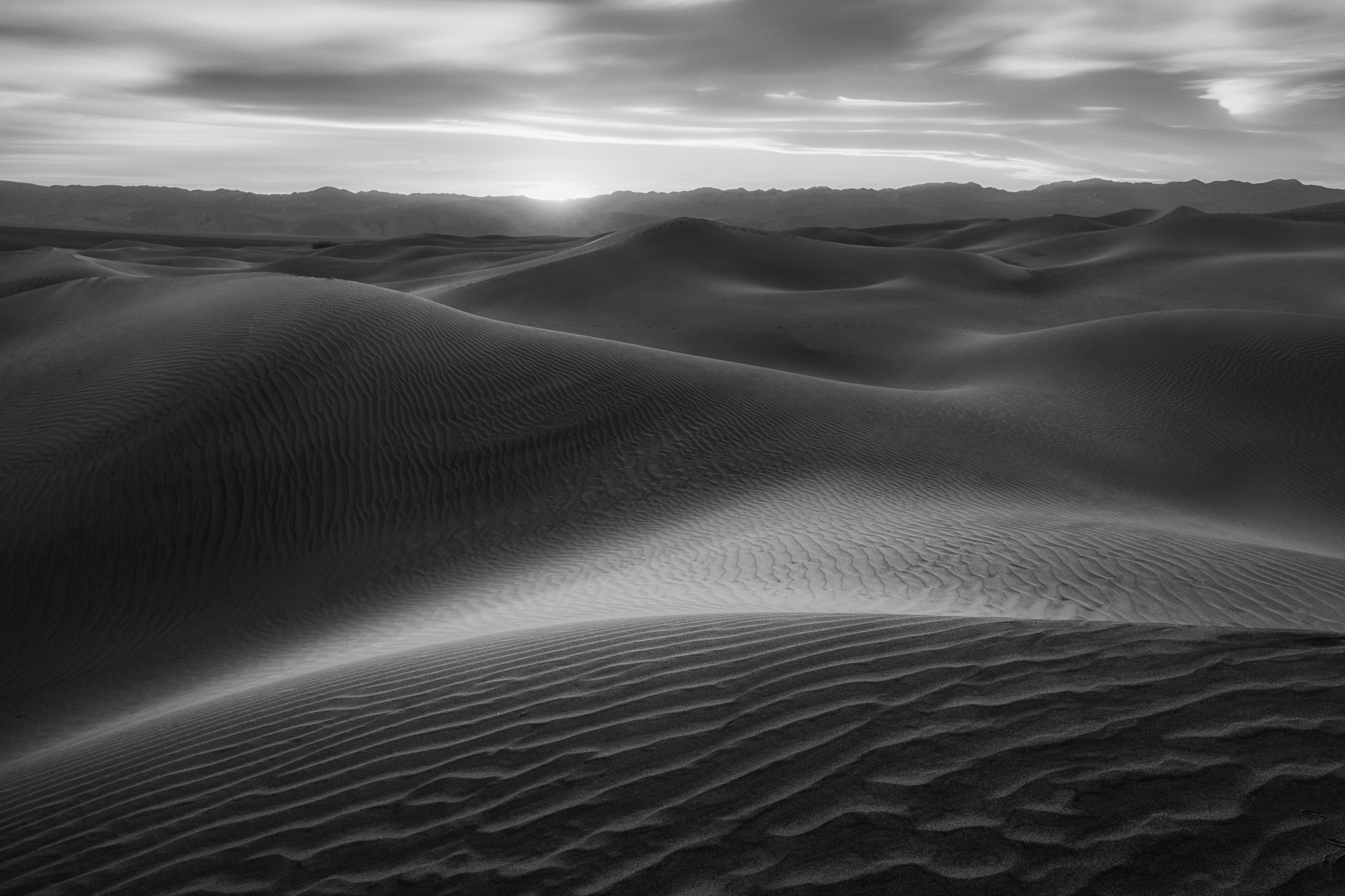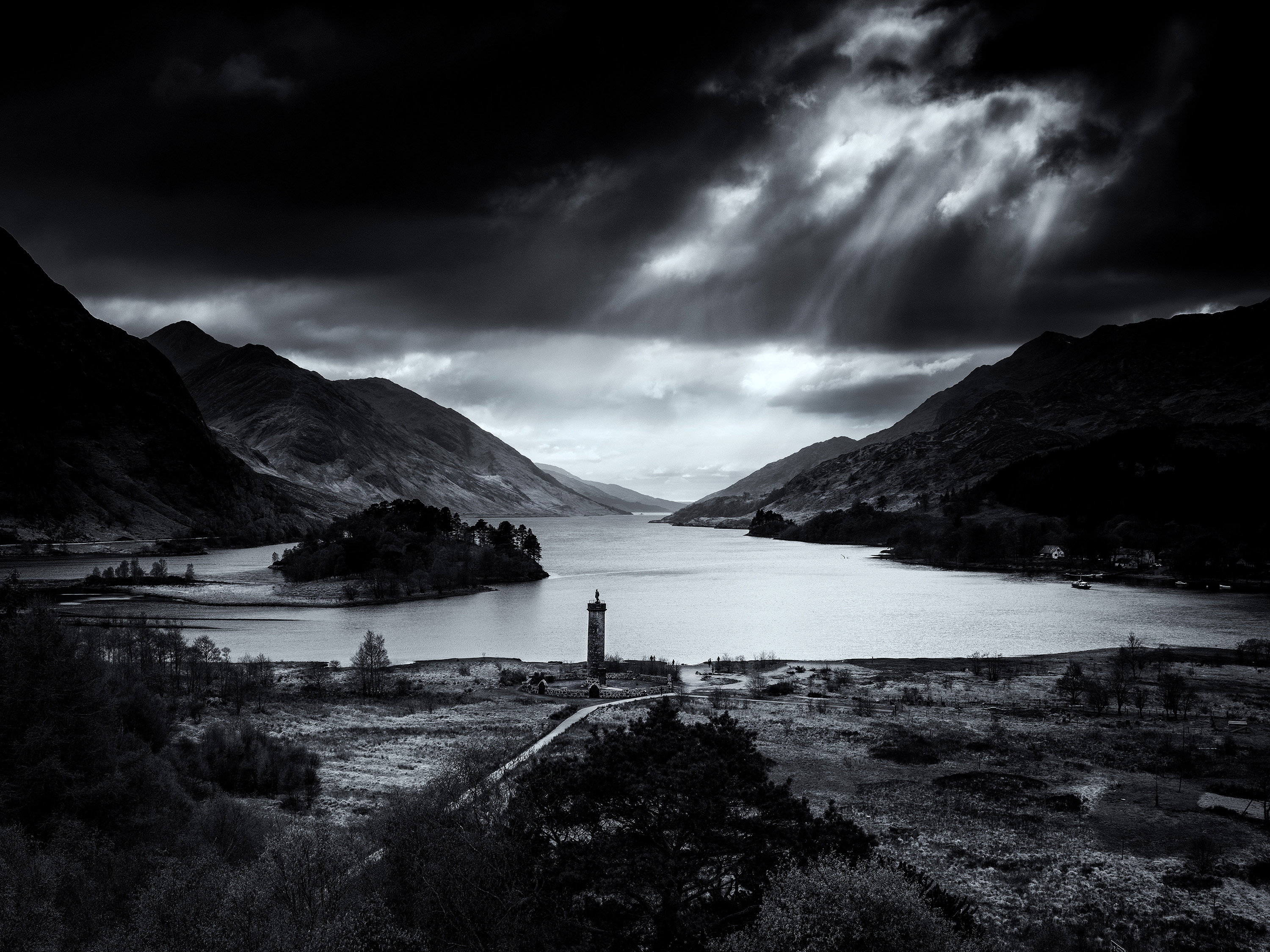Black And White Landscape Photography
Black And White Landscape Photography - It's a whole different world out there without colors! Well, technically, it's not but you get our point, don't you? Black and white landscape photography creates a unique and beautiful perspective that can transform ordinary scenery into stunning pieces of art. You can create a variety of effects in black and white, ranging from gritty and moody, to smooth and calming. So, are you ready to learn some tips on how to take better black and white landscape photos? Because we got your back!
A Simple Trick for More Dramatic Photos
If you want to create more dramatic black and white landscape photos, here's a trick - try taking the photo in the middle of the day when the sun is high in the sky. This may seem counter-intuitive since you normally want to avoid harsh light, but in this case, it can actually work in your favor. The bright sunlight will cast strong shadows and highlight the texture, structure, and patterns of the landscape. This works especially well for landscapes with rocks, buildings, and other structures that have interesting shapes and textures. Just make sure to expose properly for the highlights so that they don't get blown out and lose detail.
Use Long Exposure to Achieve Dreamy Effects
If you want to create dreamy and surreal black and white landscape photos, try using long exposure. This technique involves using a slow shutter speed to capture motion blur that creates a sense of movement and fluidity in the image. You can use this technique for waterfalls, waves, clouds, or any other element that can create a sense of motion. To achieve long exposure, you'll need to use a tripod and a neutral density filter to reduce the amount of light entering the lens. Start with a shutter speed of 1-2 seconds and adjust as needed based on the amount of movement you want to capture.
Contrast Is Your Friend
Contrast is the key to creating stunning black and white landscape photos. Without color, contrast becomes even more important since it's the only way to differentiate between different elements in the image. You can create contrast in a number of ways - by using shadows and highlights to create depth, by using contrasting textures and patterns, or by using strong lines and edges to create a sense of direction and movement. Keep in mind that not all scenes are suitable for high-contrast black and white photos. Overexposed areas or images with flat lighting are unlikely to produce satisfactory results.
Choosing the Right Scene
Not all landscapes are good candidates for black and white photography, so choosing the right scene is critical. Some of the best scenes for black and white photography include mountains, seascapes, forests, and cityscapes. These types of scenes have a lot of interesting textures and patterns that can be emphasized with black and white. When choosing a scene, pay attention to the lighting and the mood - scenes with strong contrast and dramatic lighting will produce the best results.
Post-Processing and Conversion
Finally, as with any kind of photography, post-processing and conversion are key to achieving the desired effect. There are a lot of different ways to convert color photos to black and white, including using channels, presets, or conversion software. Whatever method you choose, make sure to pay attention to the contrast, brightness, and tonality of the image. You can also adjust the levels, curves, and exposure to make the image pop. And don't forget to add some vignetting, grain, or other effects to give the image some character and personality.
Conclusion
Black and white landscape photography can be a challenging but rewarding pursuit. By using the right techniques and paying attention to contrast, lighting, and composition, you can create stunning black and white images that capture the essence of nature and landscape. Remember, the key is to experiment and try different approaches until you find a style that suits your personal tastes and preferences. Happy shooting!

The Role of Visualization
Visualization is an essential part of black and white landscape photography, as it helps you to pre-visualize the final image before you take the shot. This involves imagining the scene in black and white and visualizing how the different elements of the landscape will look in the final image. When you're out in the field, take some time to study the scene and look for interesting patterns, textures, and contrast. Use your imagination and experiment with different angles, perspectives, and focal lengths to create a unique and compelling composition.
Color vs. Black and White
One of the biggest challenges in black and white landscape photography is deciding when to go with color and when to go with black and white. While some scenes are naturally suited for black and white, others can benefit from the use of color. For example, scenes with interesting color contrasts or harmonies can look stunning in color. On the other hand, scenes with busy or distracting colors can benefit from simplification through black and white. Ultimately, the decision should be based on the mood, ambiance, and emotions you want to convey in the final image.

The Focal Point
One of the most important elements of any landscape photo is the focal point. This is the part of the image that draws the viewer's attention and provides a visual "anchor" for the rest of the scene. In black and white photography, the focal point becomes even more critical, as it needs to stand out amidst a sea of gray tones. Look for elements in the landscape that can serve as the focal point - this could be a striking rock formation, a tree, a building, or a person. Use the rule of thirds or other compositional guidelines to position the focal point for maximum impact.
The Magic of Monochrome
Black and white landscape photography has a certain magic that is hard to replicate with color. By removing color from the equation, you're left with a more abstract and minimalist representation of the landscape. This can help to create a more timeless and universal quality to the image, as the viewer is not distracted by the specifics of the color palette. Black and white photography can also bring out the textures, patterns, and details of the landscape in a way that color cannot. So, embrace the magic of monochrome and see where it takes you!

Stunning Scenes in Black and White
Here are some stunning black and white landscape photos to inspire you:

Mountains are perfect subjects for black and white photography, as they offer plenty of texture, patterns, and contrast. This photo of a mountain landscape in Nevada captures the mood and atmosphere of the scene beautifully.

This stunning image of a misty landscape in black and white creates a surreal and dreamy effect, with the tall trees and mist adding a sense of depth and mystery to the scene.
The Power of Black and White
Black and white landscape photography is a powerful and versatile art form that can create striking and evocative images. By using the right techniques and equipment, you can create stunning black and white images that capture the essence of nature and landscape. So grab your camera and tripod, head out into the wild, and start exploring the world of black and white photography!
Read more articles about Black And White Landscape Photography
Post a Comment for "Black And White Landscape Photography"